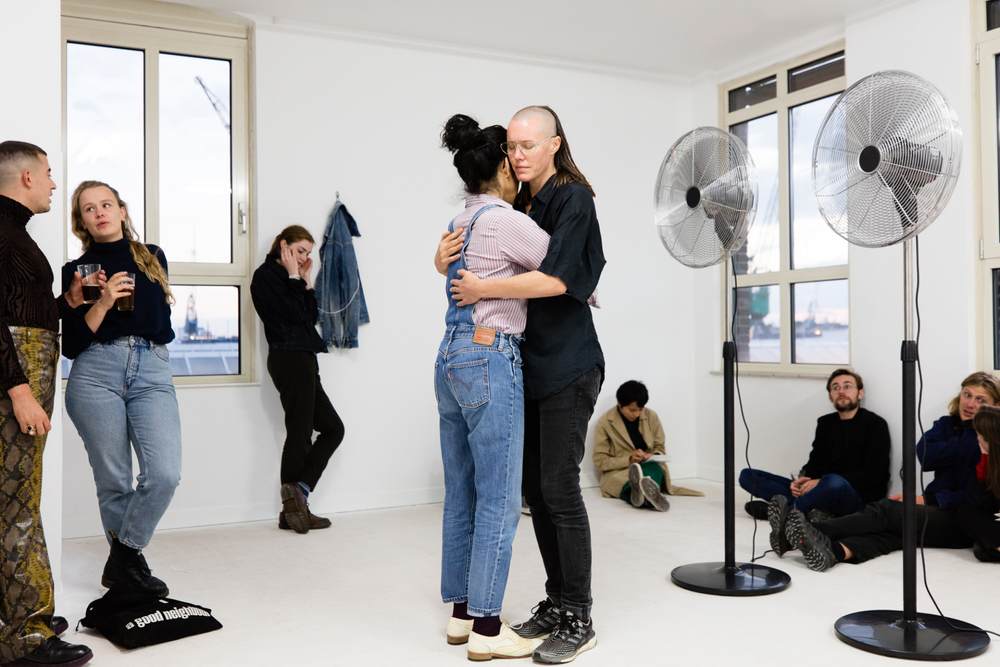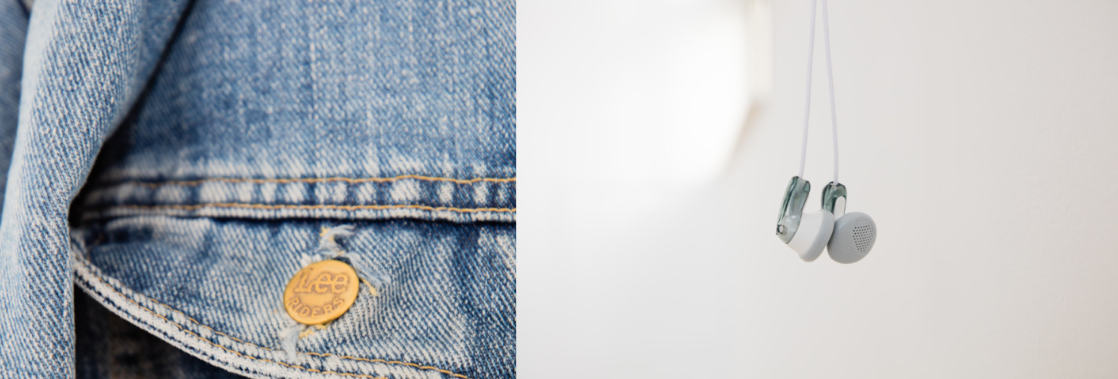Rotterdam Art Writing
It turns out the action we are watching is only the first of many, or that it is singular, but composed of many parts. When the first round ends, one of the dancers (the artist, it turns out) whispers something to the woman next to me, and after a short exchange, she joins her in front of the fans. I wonder if she is going around the room in turn, and experience both the desire to participate and a nervous twitch at the thought of being public.






Lee
RIDERS
A sound piece, called Sometimes, Sometimes, Sometimes plays: an urgent voice, female, North American. On the floor, there is a pile of transcripts of the audio, weighed down by a chewed dog bone.
Each sentence begins with the word ‘sometimes’. ‘Sometimes rhythm is critical.’ I’m locked into the qualities of the voice, and the sound design, which introduces abstract acoustic artefacts underneath the text like vinyl crackle. ‘Sometimes territorial marks are readymades.’ Why only sometimes? If not for that word it would read, or sound, like a manifesto. Instead it is placed in a realm of uncertainty, though the reader’s voice is far from uncertain. Sometimes, hearing the emphasis on ‘territory’ it feels anthropological; sometimes it feels like instructions for making music, or the event score for Strategic Flocking. ‘Sometimes territorialisation is an act of rhythm that has become expressive.’
This kind of duality suffuses Arnell’s work: it vibrates between the instructional and the uncertain, industrial fans and slow dancing, the words ‘strategic’ and ‘flocking’. Strategic: making a plan, thinking long term; military overtones. Flocking: an act of collective movement, self-preservation, navigation (synonyms: gather, collect, congregate, assemble, stream, swarm, surge, seethe). Tactics which might be designated conceptual in another context here feel interpersonal: Fluxus’ appropriation of public space through impromptu actions wrought into an emergency measure, a queer point of resistance against the contemporary management of space and desire; two people with their backs to the room, oblivious and out of time. George Maciunas and co.’s bold declaration to ‘FUSE the cadres of social & political revolutionaries into united front & action’ (Fluxus Manifesto, 1963) came at a time when culture was opening up in parts of the global north, a post-war moment of possibility; Arnell’s interventions come in a time of interregnum, stagnation, austerity. The possibility of such liberation seems to decrease in inverse proportion to its necessity.
Throughout my experience of the works, I keep coming back to the idea of permission: Arnell gives me permission (or not) to slow dance, permission to go out into Charlois and move my body with other people. This is often the power, the ecstatic crackle, of this kind of work: it gives you permission you would not otherwise give yourself. The participants of Strategic Flocking were asked to leave their phones in the gallery when they went outside: an act of trust as well as a prompt to be mindful, permission to leave yourself behind.
These are small gestures, though cumulatively weighty; self-care as Audre Lorde would have us practice it, radical self-preservation. The embrace in Slow Dancing with Two Fans is comforting, perhaps, but it is only one of many gestures in Arnell’s practice. Another redeploys the human body as a way of measuring the distance between two points (Measuring the Distance Between the Old Harbor and New Harbor With two Human Bodies, 2017); and another sees her cutting her lips with a razor, in a re-enactment of Gina Pane’s 1975 piece Discours mou et mat (Reflect Soft Matte Discourse, 2011). The razor could be just as much of a coping mechanism as the slow dance; at the opening, the dance cuts into the social dynamic of the space. The title of the exhibition—Our Time Together is Uncertain—feels like a rallying call. Who is included in the ‘our’, and how much ‘time’ is designated, is unclear. I’m left to contemplate what it might feel like to take part in the slow dance.



